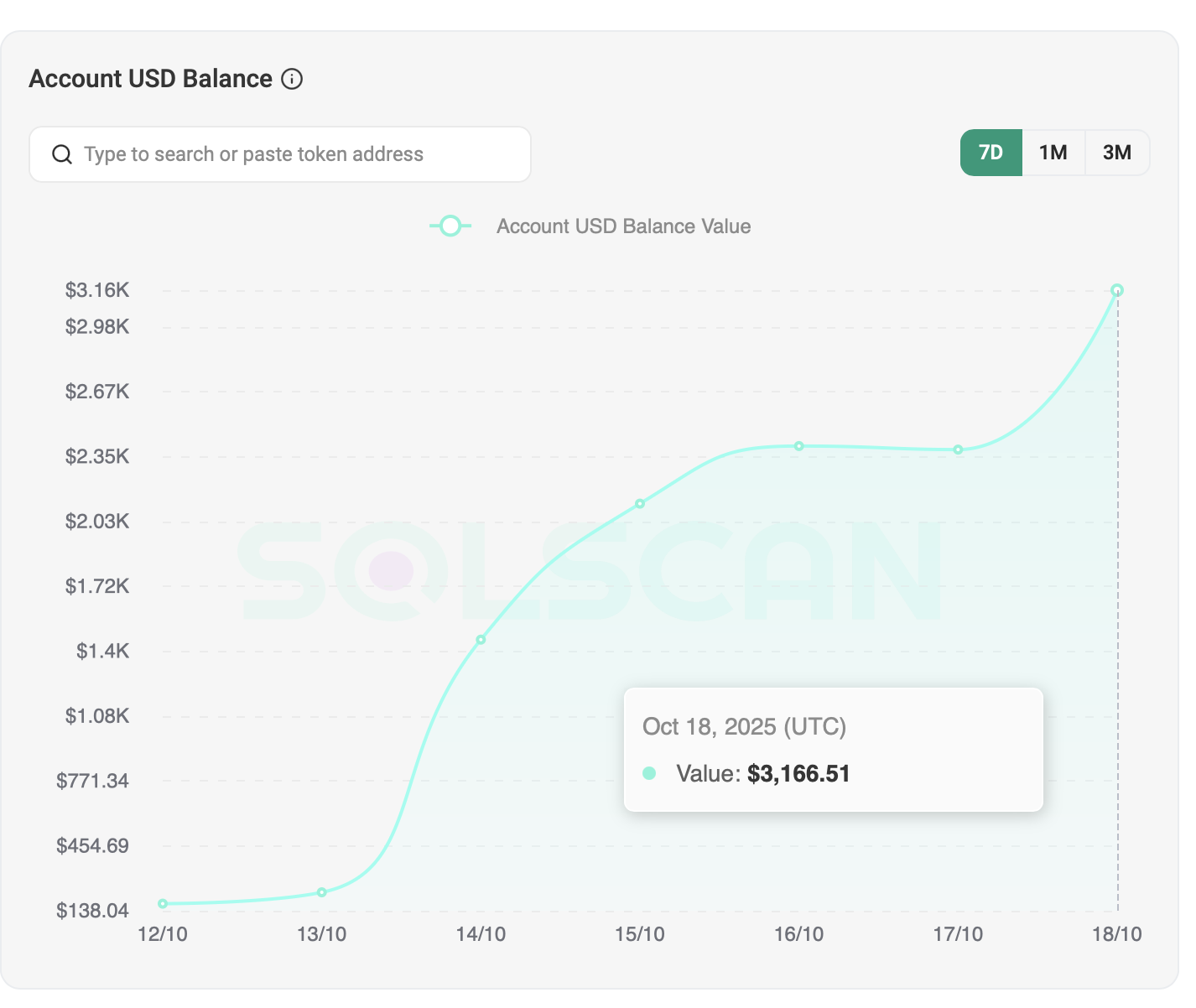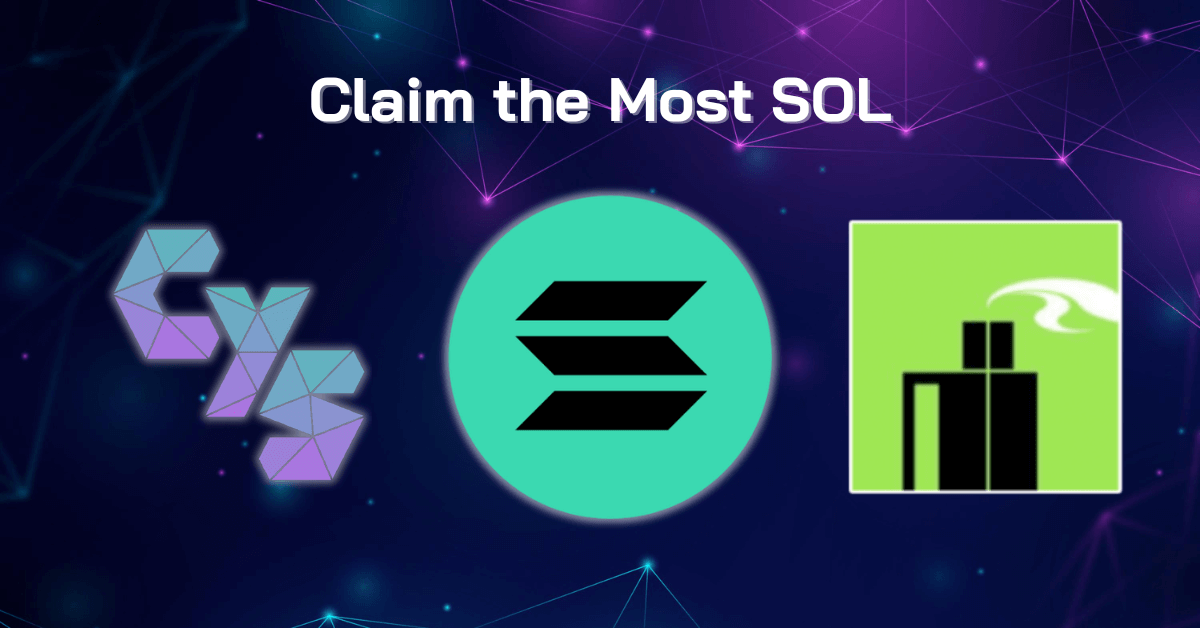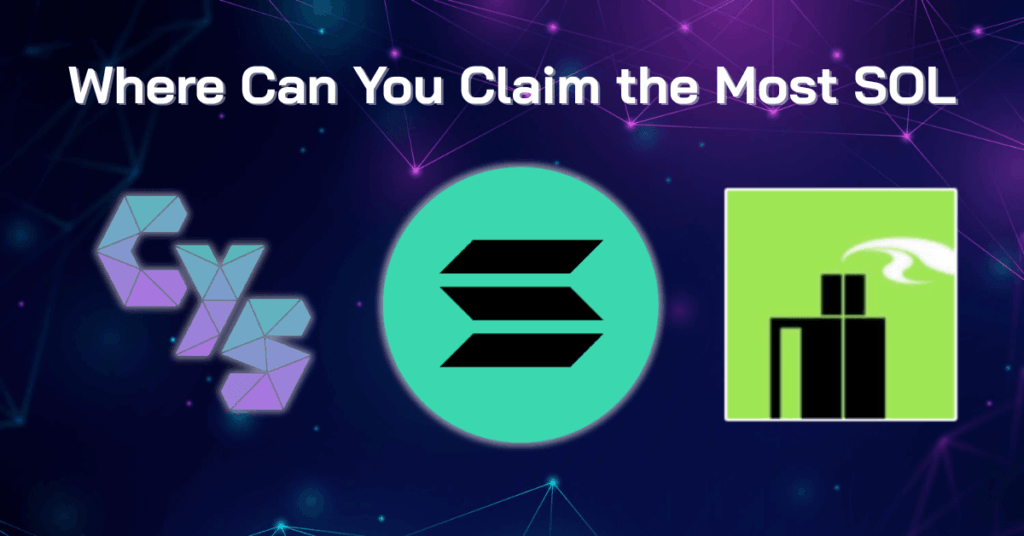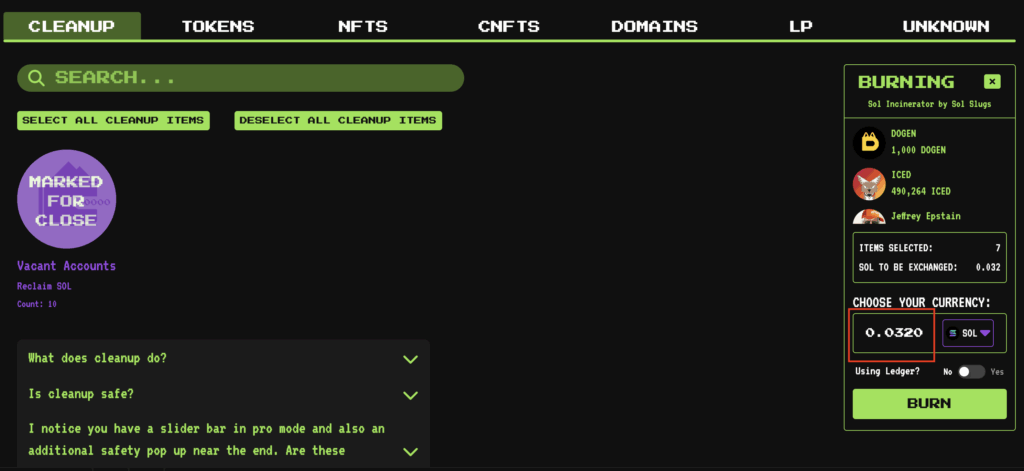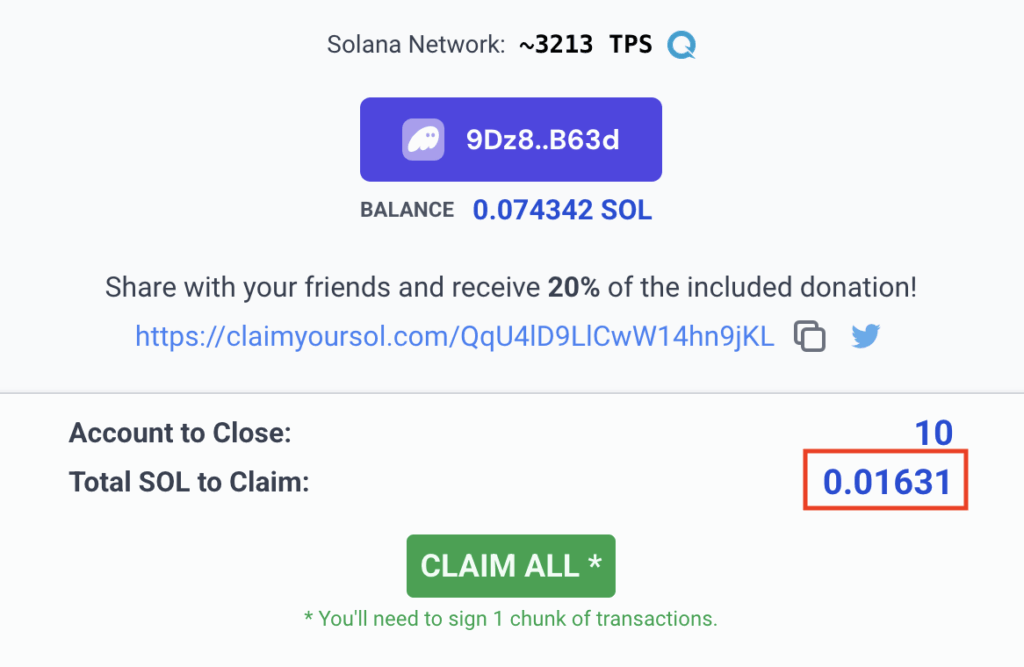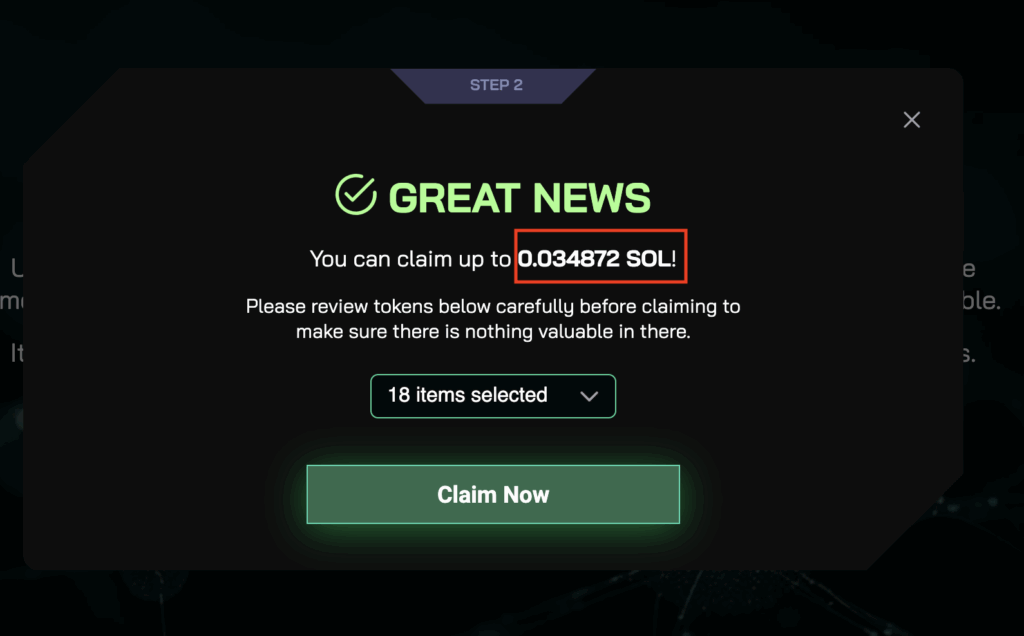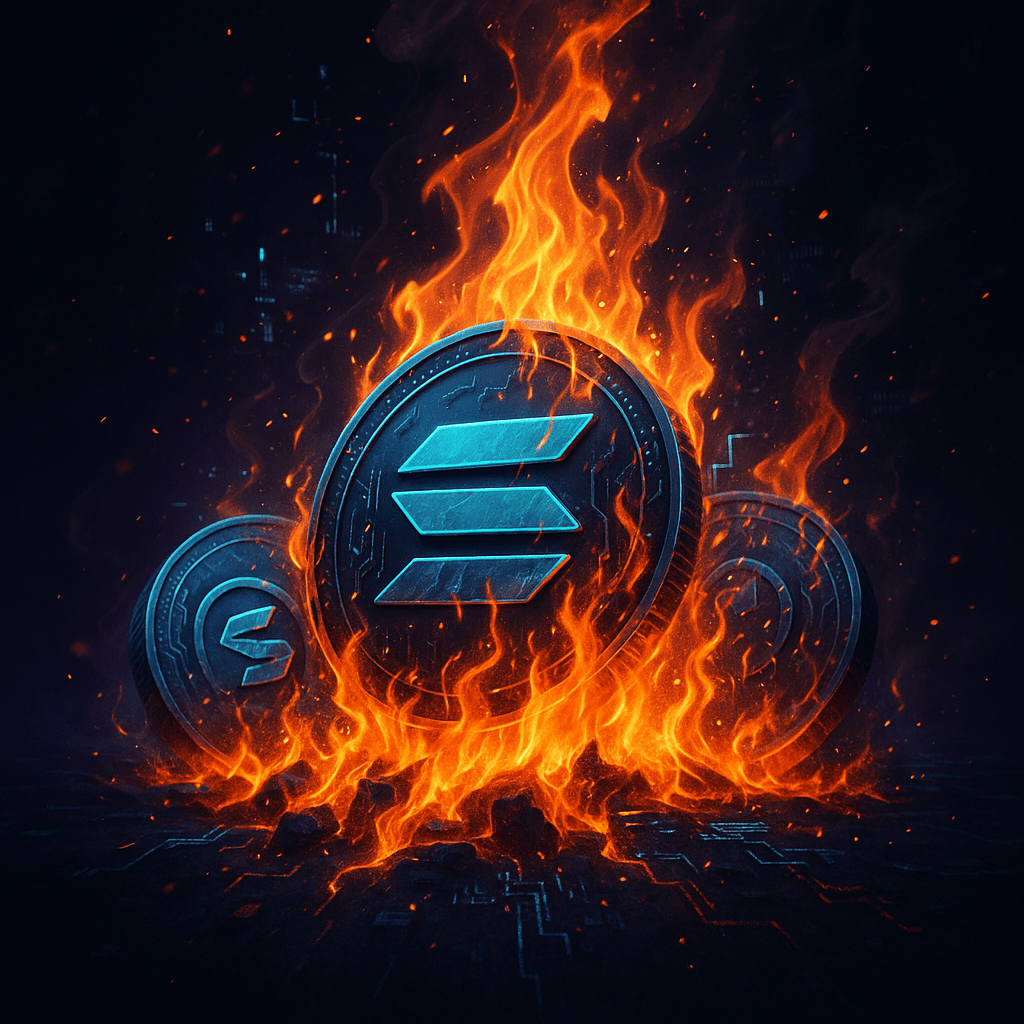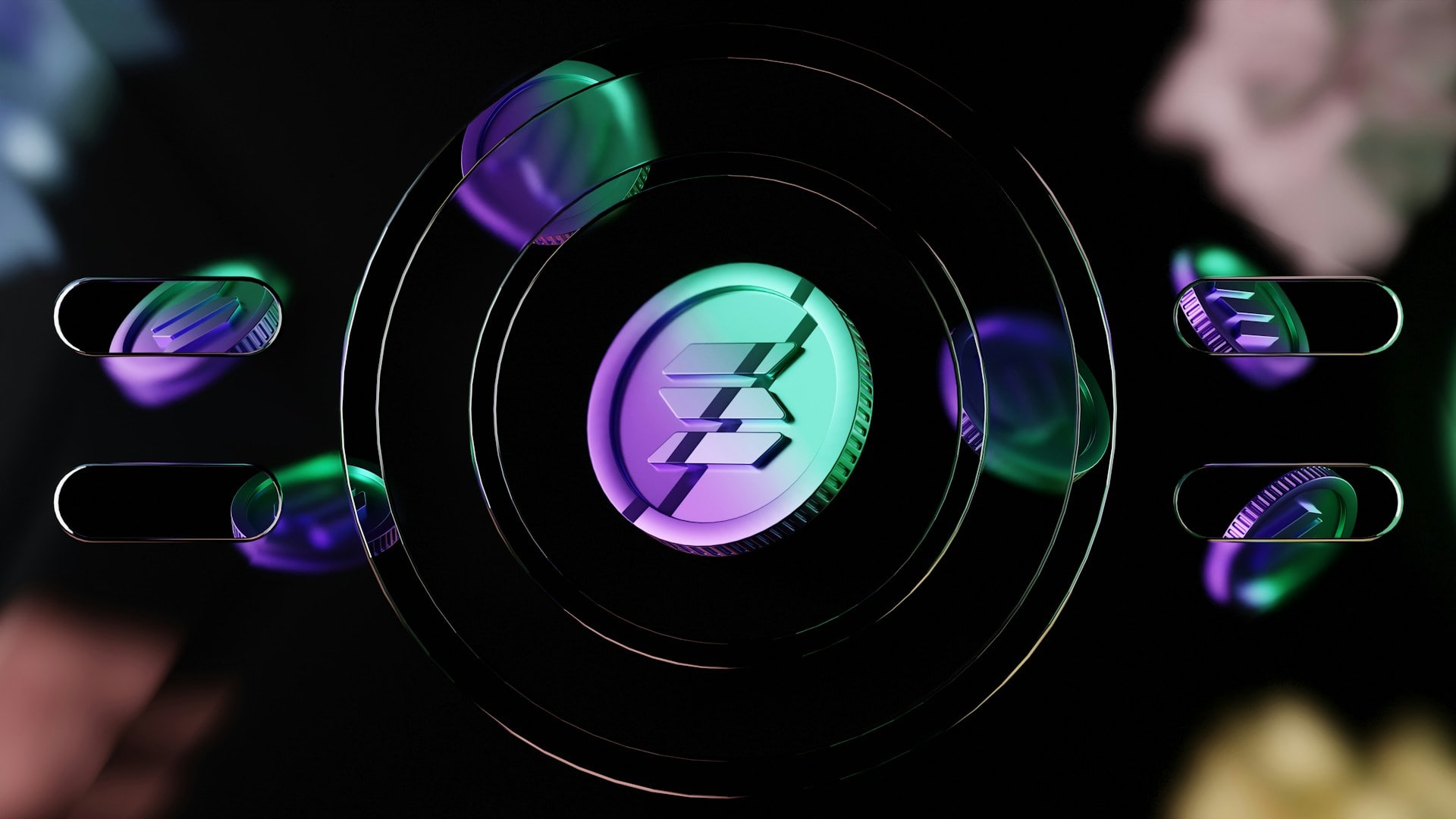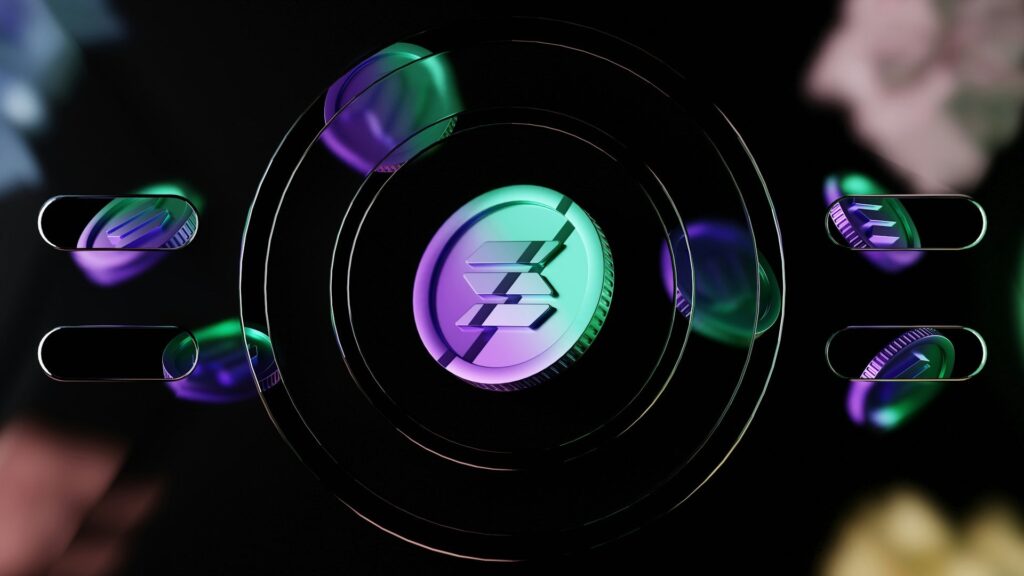Introduction
The past seven days have been incredible for Solana users reclaiming their hidden balances.
According to our latest data, over 320 SOL were claimed this week through UnclaimedSOL, a platform that helps users recover rent fees and forgotten assets safely from their wallets.
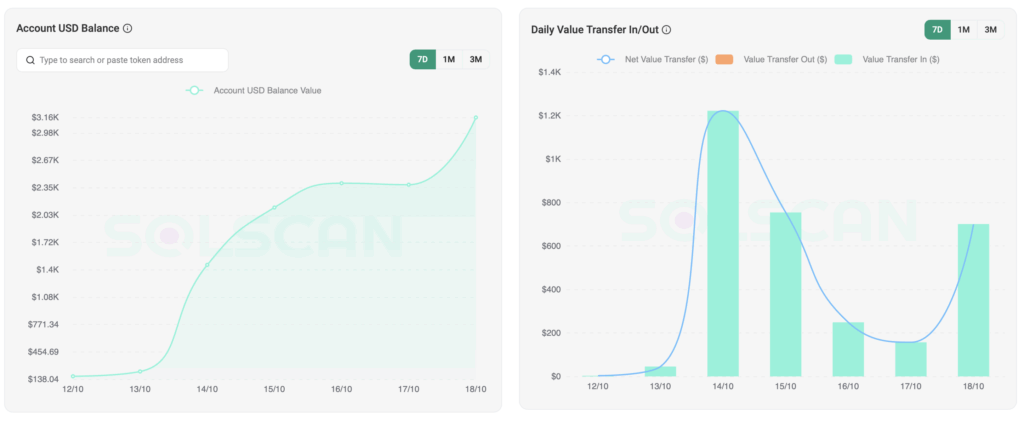
This weekly report breaks down how much SOL was claimed, where it came from, and what it means for the growing Solana community.
How “Claimed SOL” Is Calculated
Whenever a user runs a cleanup on UnclaimedSOL, the app automatically scans their wallet for inactive token accounts, closed DeFi program leftovers, and unused mints.
Each cleanup returns a small balance, usually between 0.001 and 0.004 SOL per account, directly to the user’s wallet.
To keep the network sustainable, a tiny service fee of 5% is sent to our operational wallet. By analyzing this wallet on-chain, we can accurately estimate the total SOL claimed by all users across the platform.
Weekly On-Chain Overview
Between 12 October and 19th October, here’s what happened on UnclaimedSOL:
- Total fees collected: $2.994
- Total USD value recovered: 2994 / 0.05 = $59.880
- Number of wallets cleaned: 12.057
- Number of transactions: 21.308
- Average claimed per wallet: 0.027 SOL (equivalent to $4.97)
Every number above comes straight from the Solana blockchain, publicly verifiable through explorers like Solscan by inspecting our fee address: uncNCRycMtNPj2kXHfwiCgNrzCTnC9xU5FS8ZeWyn3M. No estimates – only real, on-chain data. We have also pulled screenshots from Solsan for the stats so you can check below.
Visualizing the Claimed SOL
To make weekly tracking easier, we have added a few screenshots from Solscan. These charts show the total operational wallet balance and number of transactions per day for the past 7 days.
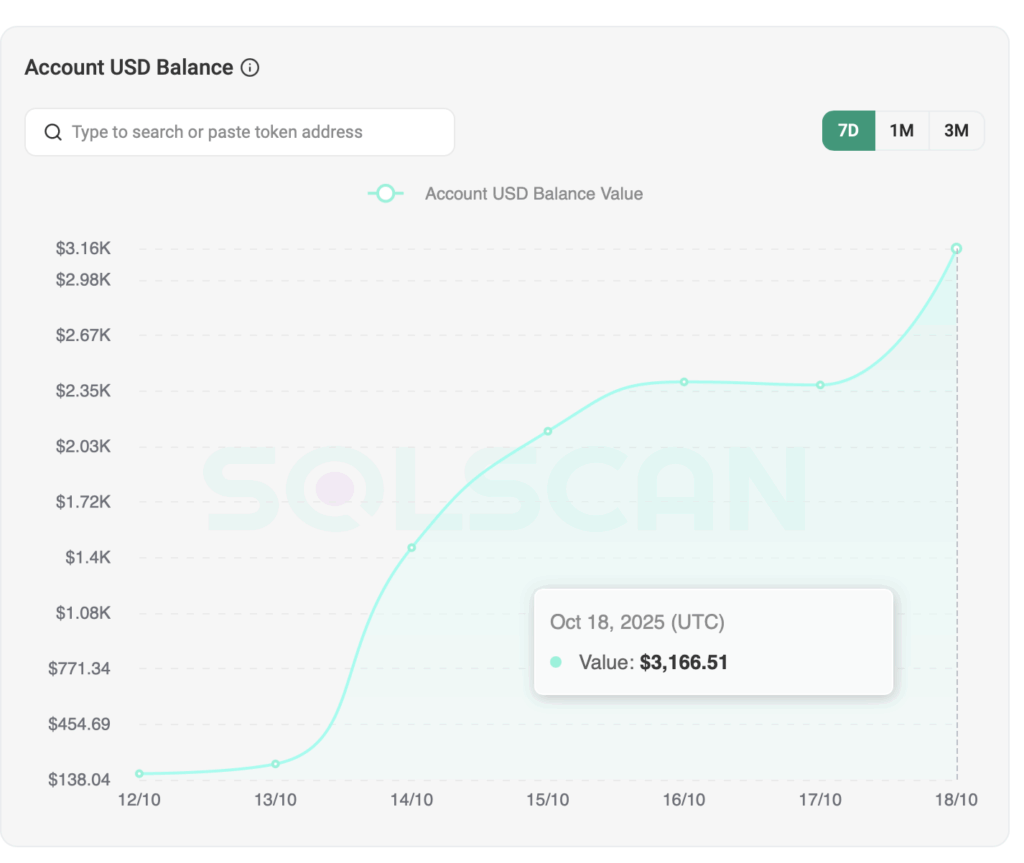
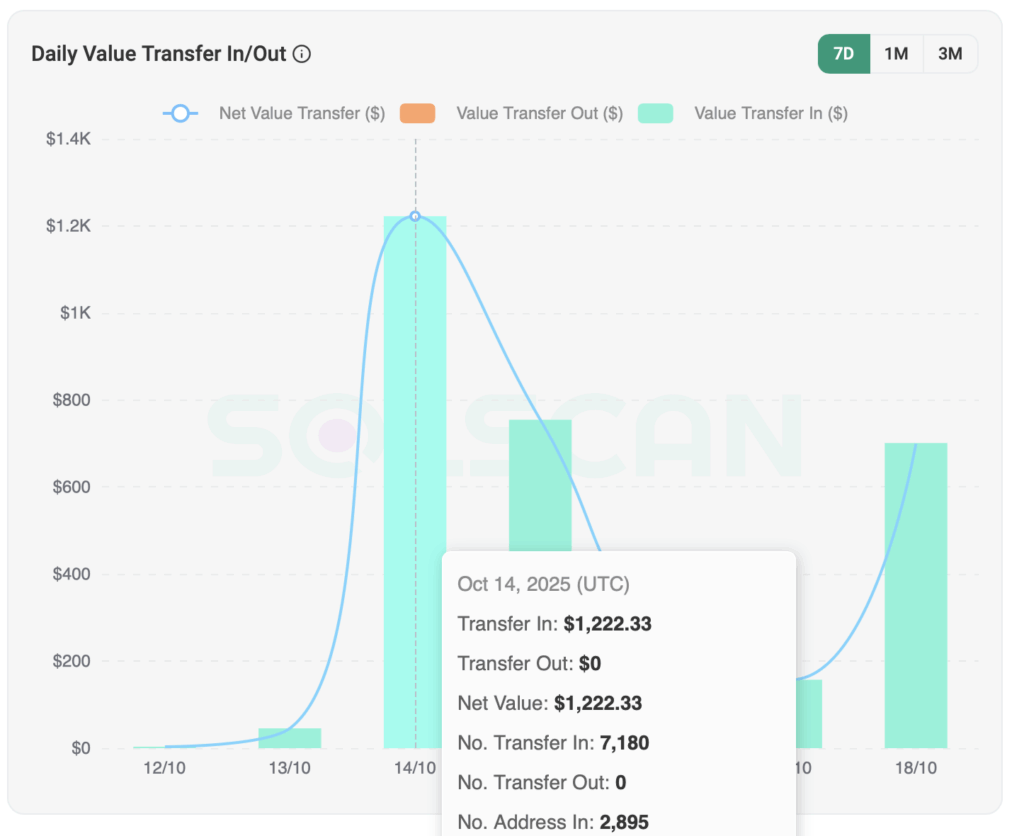
Why This Matters
Cleaning up wallets isn’t just about free SOL. It keeps the Solana network lightweight and efficient.
Every closed token account reduces blockchain storage, lowers validator load, and improves performance across the ecosystem.
So each time users claim SOL, they’re also contributing to a cleaner, faster, and more sustainable Solana.
Overall Stats by Phantom
If you navigate to Unclaimed SOL Phantom App Page you can see overall metrics of 25k+ transactions, almost 60k connections and 13k+ active users. This puts Unclaimed SOL in the very top of all Claiming Tools with a market rank of 1.
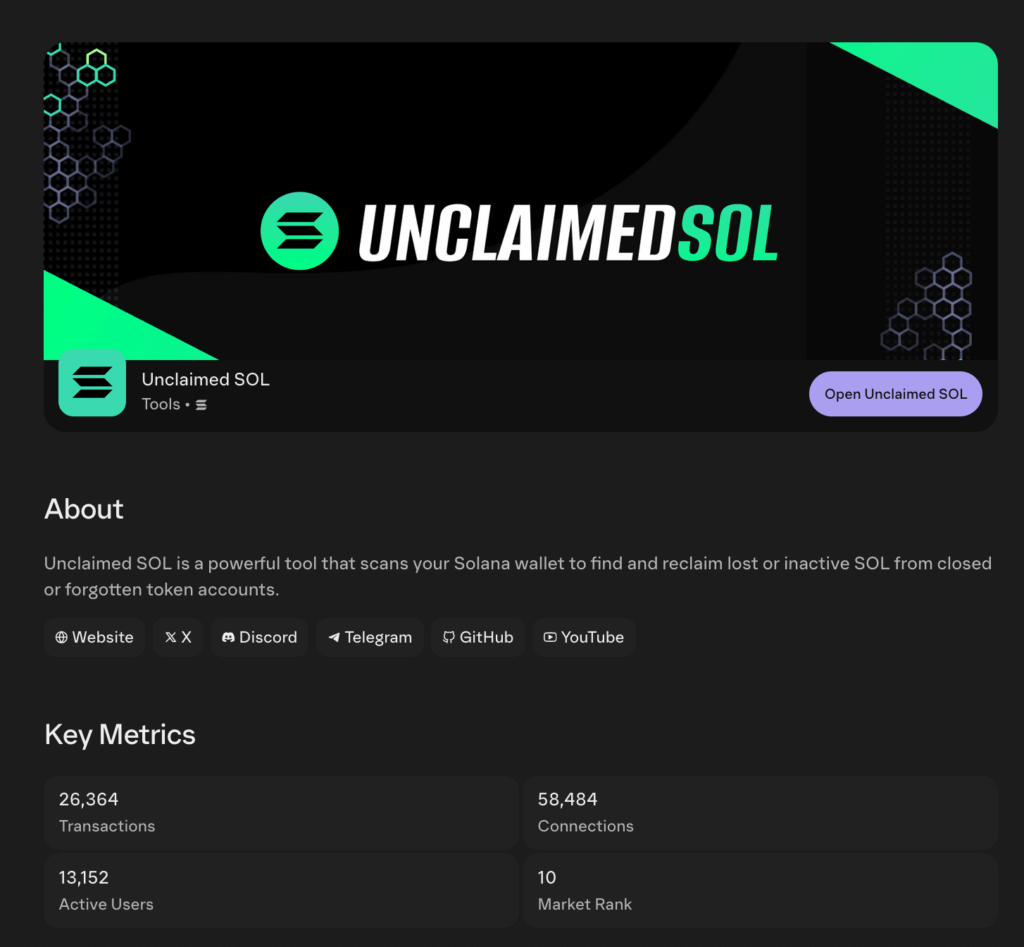
This level of activity positioned Unclaimed SOL to the #1 Market weekly rank:
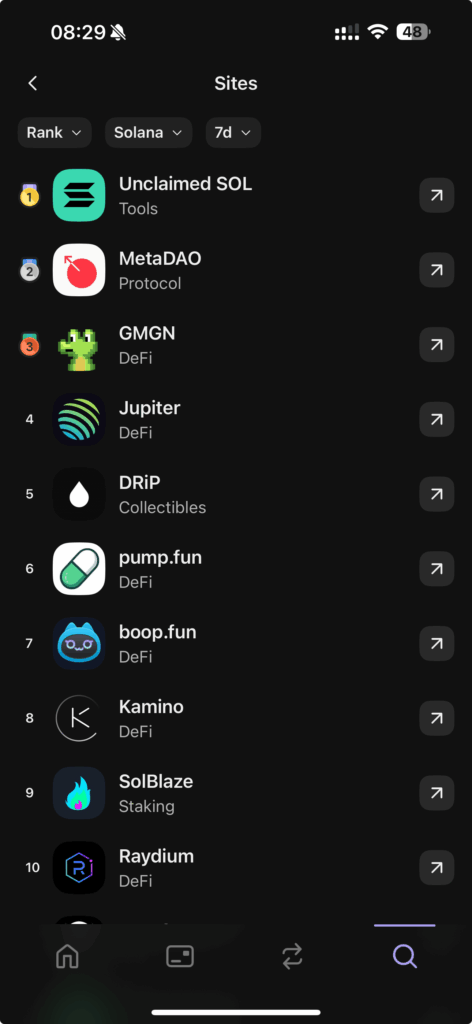
Community Spotlight
We’ve received messages from users who discovered 1–3 SOL they didn’t even realize they still had.
Many had old NFT accounts or DeFi pools that were quietly costing rent. By reclaiming that value, users are now re-engaging with Solana — and spreading the word about how much SOL can still be claimed.
If you’ve benefited from UnclaimedSOL, tag us on X (@UnclaimedSOL) with your story. We might feature it in next week’s report!
Highest Claimer
The report would not be complete without us showing who claimed the most SOL in the past week. The crazy amount of 3.1404 SOL has been claimed by 8ooxH9YQrA3dtMrQoUQRyaVrXAAHA3TKD2FzSBFbrTYG. Congratulations to insane 141 total transfers and more than $580 claimed! If you are reading this, reach out to us for a reward!
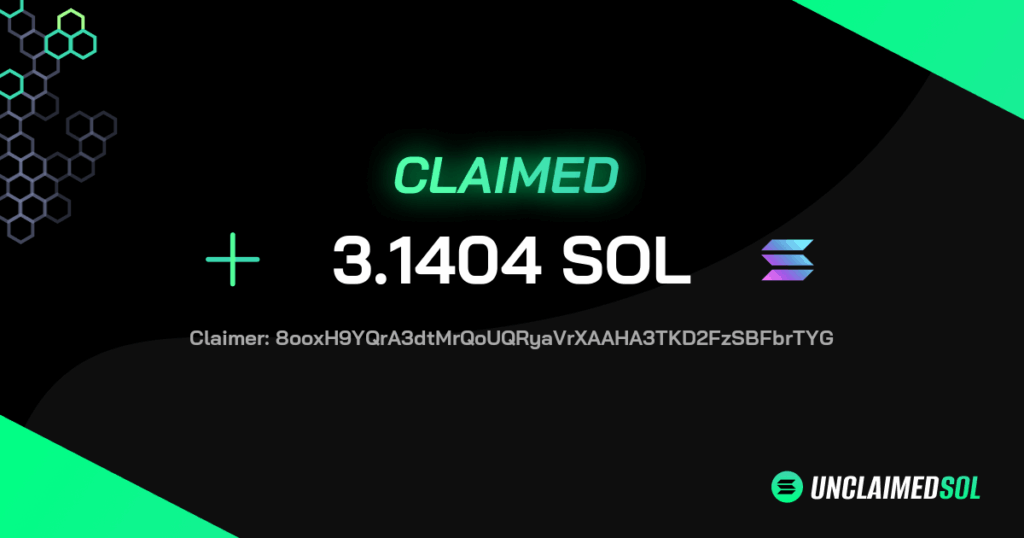
Final Thoughts
Over 320 SOL claimed in just one week proves that even small amounts can add up when the community acts together.
Whether you’re a long-time DeFi explorer or someone returning to Solana after months, UnclaimedSOL makes it simple to check, clean, and reclaim what’s rightfully yours – safely and instantly.
Read more?
Check out our comparison post on how Unclaimed SOL gives you the most rewards: Sol Incinerator vs Unclaimed SOL vs Claim Your SOL – Who Gives You the Most SOL?
